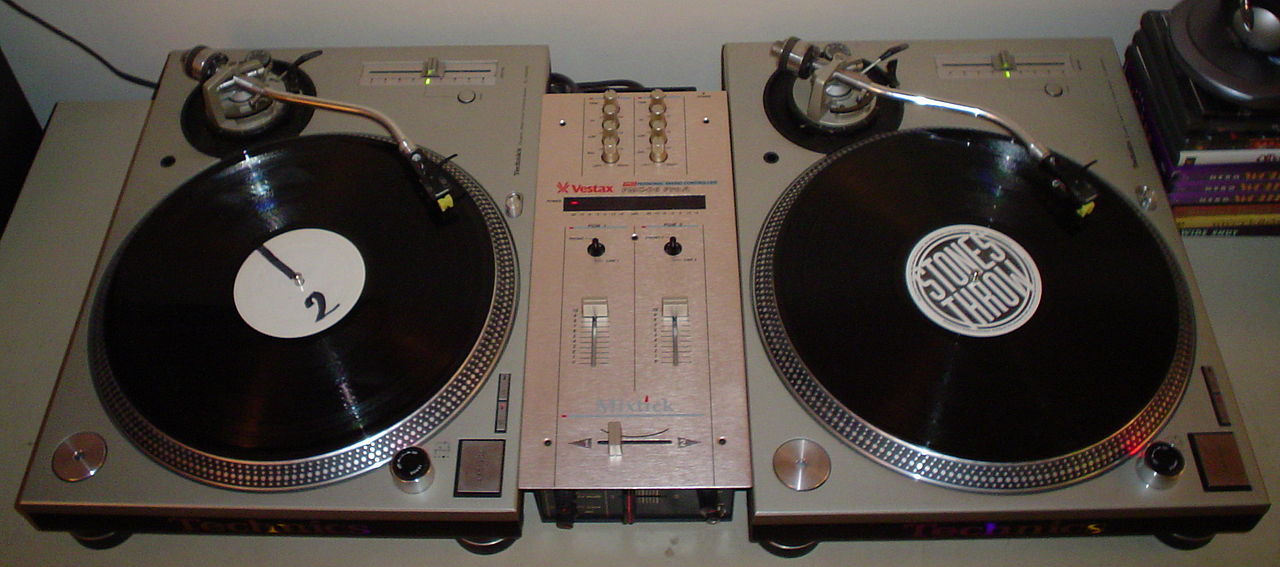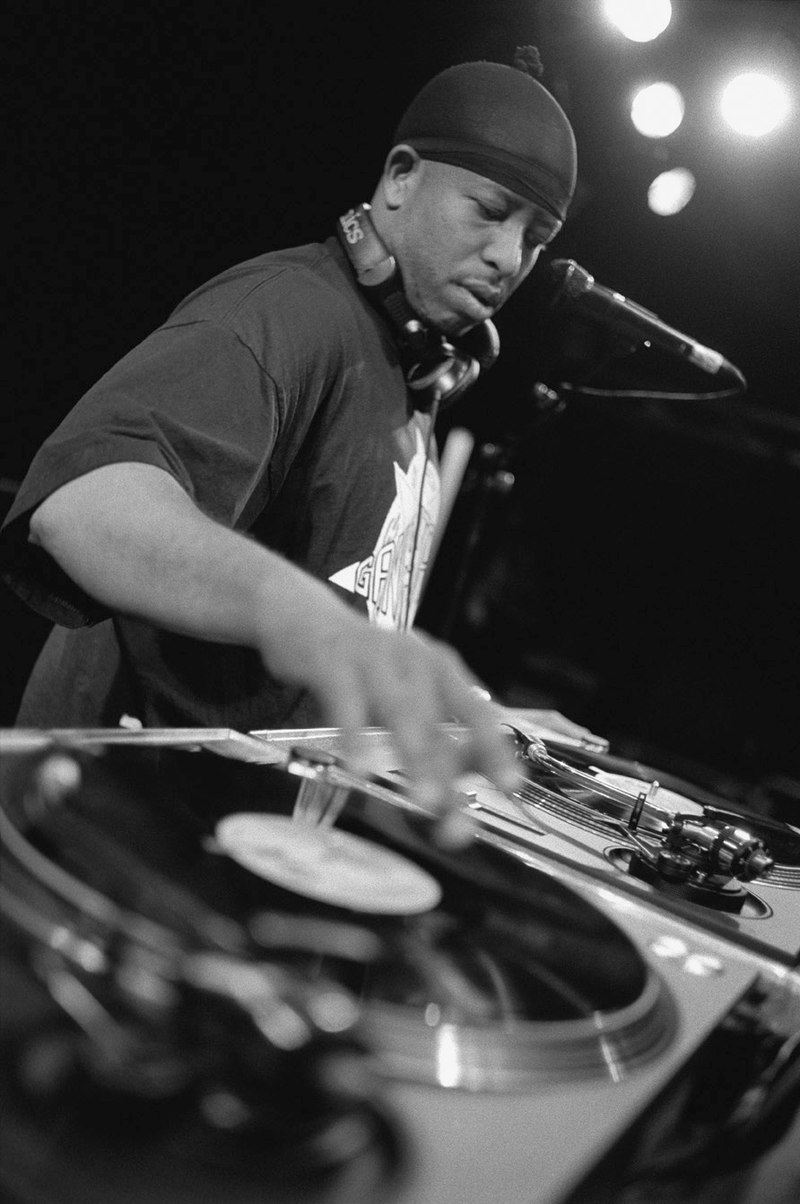
Hip-Hop: 1990s 2
During the 1990s, changes also occurred in how DJs approached their task-DJing advanced into a complex system of turntable techniques, launching the turntable into a musical instrument category of its own. Those accomplished on the turntable at creating and making beats on the "wheels of steel" began to be referred to as "turntablists"-a term coined by DJ Babu of Dilated Peoples. Noted turntable artists recognized for their unique art form include the Beat Junkies, X-ecutioners (led by Rob Swift), Invisibl Skratch Piklz (featuring DJ Q-Bert, Mis Master Mike, etc.), Cut Chemist and Nu-Mark of the rap music collective Jurassic 5, and solo acts, DJ Honda, DJ Shadow, DJ Symphony, and others. In addition, turntablism developed into an art form in its own right, mainly through international competitions sponsored by the famous turntable brand Technics, such as the Technics DMC World DJ Championship and the International Turntablist Federation Championship.
Several experimental projects exploring hip-hop's ability to merge with pre-existing genres such as jazz were also present in the 1990s. One such effort had been made several years earlier, in 1984, with Herbie Hancock's " Rockit " (1983), featuring scratching from DJ Grandmixer D.ST. Hancock now followed with another project, in 1994, called Dis Is Da Drum (1994), with scratching from the "Real" Richie Rich. The final LP recorded by Miles Davis, Doo-Bop (1992), produced by hip-hop producer Easy Mo Bee, is another example from the same period of a distinguished jazz artist's experimentation with hip-hop music.

Miles Davis - The Doo-Bop Song (Official Music Video) [ 00:00-00:00 ]
Other examples of the continued interest of jazz-oriented musicians in hip-hop include saxophonists Greg Osby (3-D Lifestyles [1993]) and Branford Marsalis (Buckshot LeFonque [1994]).

Bradford Marsalis "Buckshot Le Fonque," live 1997
Bassist Ron Carter's work on the hip-hop classic The Low End Theory (1991) by A Tribe Called Quest also proved to be another example of combining elements of jazz with hip-hop.
Other acts combined jazz and sampling, most notably Gang Starr, featuring DJ Premier and Guru in their revolutionary 1993 work Jazzmatazz: Volume 1 (which included live performances by Donald Byrd, Roy Ayres, Lonnie Liston Smith, and Courtney Pine), US3's with their classic rendition of Hancock's " Cantaloupe Island " (1993) and rap act Digable Planets with " Rebirth of Slick (Cool Like Dat)" (1993), featuring samples of Art Blakey and the Messengers.







